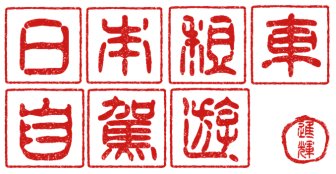Related articles: A complete guide of Japan Rental Car
Car-rental service in Japan seems to be a slight difference from other countries. Here we summerize several general information on car rental in Japan, these things help you understand the overall picture of car rental in Japan.
Contents
- 1 Which car-rental companies are reliable and trustworthy? Leading car-rental companies are highly recommended.
- 2 Some periods there is hard to make car reservations, or products are out of stock just before the scheduled date (especially in the peak seasons).
- 3 Car rental in Japan is nearly 100% automatic vehicles.
- 4 All rental charges should be settled at the rental office when you pick up your car. Then, how about cancellation charges?
- 5 After all, what types of charges should the user pay for renting a car?
- 6 What is CDW and NOC? An easy-to-understand introduction of rental car insurance in Japan.
- 7 Where to return the rental car? Basically, car should be returned to the rental office where you pick up. But using “One-way car rentals” is convenient that you can return the car to another rental office.
- 8 How to pick up the rental car? Using free airport shuttle service if arranging at the airport (or the nearest rental office from airport), or by trains to the rental office.
- 9 Procedure for picking up a rental car. Three important points for car rentals.
- 10 Procedure for returning a rental car. None of troublesome procedure.
- 11 Car return with the tank refueled.
Which car-rental companies are reliable and trustworthy? Leading car-rental companies are highly recommended.
In Japan, there is a huge number of car-rental companies with different scales. However, leading car-rental companies that operate hundreds of outlets across Japan are less than ten. From the viewpoints of quality of car rentals, vehicle maintenance and customer services, leading car-rental companies such as TOYOTA, NISSAN, NIPPON, TIMES, ORIX, and Budget are relible and foreigner-friendly. Since many tourists from abroad chosing their products and services, most of rental car outlets get used to dealing with foreign visiters (depending on the outlets as well).
Since a large number of visitors using car rentals in the areas like Okinawa and Hokkaido, there are car-rental companies specialized in each area. Even if it’s not the above car-rental companies, there are several companies that are reliable and trustworthy.
Some periods there is hard to make car reservations, or products are out of stock just before the scheduled date (especially in the peak seasons).
In Japan, demand in car rentals is concentrated in four peak seasons. Depending on the area where you rent a car, when you try to make a car reservation just before the date of use, most of the items are out of stock during the following peak seasons. It’s because there are consecutive national holidays in Japan. If you’re planning to travel during the following periods, early reservation is strongly suggested.
・Golden Week (early May)
・Summer during the Bon Festival (mid August)
・Silver Week (late September)
・Year-end and New Year holidays (late December to early January)
*Especially in the peak seasons mentioned above, car rental products and services tend to be sold out frequently in Okinawa, Hokkaido and Fukuoka.
Car rental in Japan is nearly 100% automatic vehicles.
Unless stated as a manual car, Japan’s car-rental companies offer automatic rental vehicles. More specifically, in the case of sports cars are manual cars, it’s safe to say that the rest is nearly 100% automatic vehicles. For instance, car rentals listed in Tabirai are 100% automatic vehicles.
All rental charges should be settled at the rental office when you pick up your car. Then, how about cancellation charges?
All rental charges should be settled at the rental office when you pick up your car, unless you book at car rental comparison and reservation websites with an online payment functionality. Credit card transaction is highly recommended.
In the case of local payment, many people wonder how car-rental companies collect the applicable cancellation charges if users cancel their reservations just before use? In this case, such charges are unable to be collected indeed (There is no possible way to collect the fees even if the companies want to). As car rental services are established on a trust relationship between car-rental companies and users, once you know your car reservation is no longer needed, please cancel it as soon as possible.
*In the case of chosing credit card transaction service at the time of online reservation, the applicable cancellation fees will be deducted.
After all, what types of charges should the user pay for renting a car?
Cost for car rental
· Basic car rental fees *The cost of GPS navigation system is often included.
· Optional fees (child safety seats, baby safety seats, ETC card rental fee and etc.)
· Insurance options *Two types: Collision Damage Waiver (CDW) and Non-Operation Charge (NOC). For applicants only.
*Driving mileage will not influence the car rental fees. Car rental fees are depended on the use periods.
Cost for driving your car rental in Japan
· Expressway tolls
· Pay for gasoline
What is CDW and NOC? An easy-to-understand introduction of rental car insurance in Japan.
First of all, one point you should know is that, when you rent a car and cause a major accident in Japan, the majority of payments incurred are covered by insurance that you enroll automatically. Since we have enrolled in basic insurance at the time you rent a car, you won’t be charged a payment of large damages. This basic insurance costs are included in rental rates.
There are two kinds of expenses that users have to pay when an emergency accident happens. One is “免責額/deductibles (50,000 yen or 100,000 yen)” and the other is “休業補償費/NOC :compensation for loss of use (20,000 yen or 50,000 yen)”. Thus, the maximum payment of damages is 150,000 yen (100,000 yen for deductible and 50,000 yen for compensation for loss of use during repairing of the car) when an accident happens.
Please don’t worry. There is an additional insurance system which exempts payment of “deductibles” and “compensation for loss of use” respectively. Let’s explain each in details.
· Collision Damage Waiver (CDW)
免責額/Deductible is an expense meaning “Most of the expenses incurred in an accident will be paid by car-rental company, but user is also responsible for partial responsibility”. Driver has to pay 50,000 yen or 100,000 yen, depending on circumstances of the accident.
In Japan, there is a “Collision Damage Waiver (CDW)” that driver has no need to pay for this deductibles. The CDW costs around 1000 yen per day. Please note that CDW fee may included in the rental rates in same cases, due to the car rental comparison and reservation websites. For example, at the websites like Tabirai, CDW fee has been included in all rental rates.
· Non-Operation Charge (NOC)
On the other hand, 休業補償費/Non-Operation Charge (NOC) is an expense meaning “User is responsible a part of the expenses as compensation for loss of use during the repair or cleaning of the car”. Driver has to pay 20,000 yen or 50,000 yen, depending on circumstances of the accident.
Most of the leading car-rental companies offer their original insurance (equivalent to NOC insurance/NOC補償保険 or security insurance/安心保険), that driver has no need to pay for this NOC(non-operation charge). You can apply this insurance at the rental car offices.
*Many Japanese drivers apply for the Collision Damage Waiver (CDW) when renting a car, but the Non-Operation Charge (NOC insurance) is only few. In many cases the NOC insurance also provides road services (such as tire change, battery exchange, and support when gasoline runs out during driving), so many tourists from abroad apply for the NOC insurance.
Where to return the rental car? Basically, car should be returned to the rental office where you pick up. But using “One-way car rentals” is convenient that you can return the car to another rental office.
You can specify where to pick up a car (departure location) and where to return it (return location) when making a car reservation. For example, if you pick up a car at a rental office near New Chitose Airport in Hokkaido, it’s common to return it to the same office.
However, there is a service called “One-way Car Rentals” that you can pick up a car at one rental office and return it to another. This optional service can be also specified when making an online reservation. One-way drop-off fee may be charged in addition to rental charges, but it’s convenient to free your travel plannin. For example, if you pick up a car at a rental office near New Chitose Airport in Hokkaido, you can then return it to another airport or train station in Hokkaido (such as Sapporo Station and Asahikawa Station).
How to pick up the rental car? Using free airport shuttle service if arranging at the airport (or the nearest rental office from airport), or by trains to the rental office.
If you arrange to pick up your hire car at the airport, except for the rental office is at the terminal, you will take a shuttle bus from the airport to the nearest rental office. The meeting place with car-rental companies is decided for each airport, so please check in advance. Most of the car-rental companies set up their respective counters in the airport.
On the other hand, if you choose to pick up your hire car at a rental office other than the airport (for example, a rental office near train station), basically you have to move to the location by yourself. In most cases, it’s just a few minutes walk from the train station.
*For an easy pick-up procedure, it’s a good idea to print out the relevant information, including reservation number and user’s name, when you’ve finished online reservation. Also, it’s strongly suggested to write down “which car-rental company you reserved” and “the car-rental company’s logo and name, in both Japanese and English”.
Procedure for picking up a rental car. Three important points for car rentals.
After arriving at the rental office (departure location), you just need to follow the guidance and instructions of staff, and complete the car rental procedure. The procedure is mainly as follows.
· Confirmation of international driving permit and passport
· Confirmation of car rental details
· Explanation of insurance system *As staff is seldom to explain it in detail here, please check the website beforehand if necessary.
· Payment of car rental fees
· Picking up a rental car
*In most cases, there are staff who can speak English at major rental car outlets in metropolitan areas. However, most staff may explain to you in simple English or even in Japanese, while showing you car rental materials that written in English.
There are three particularly important things for car rentals.
· The one who wishes to enroll in the original insurance (Non-Operation Charge (NOC)/ security insurance) of car-rental company, please inform the staff during “confirmation of car rental details” as mentioned above. The procedure won’t take too much time.
· Please check emergency contact information and other accidents happen contact information. It’s probably listed in the materials given to you. Before you pick up your hire car, it’s better to check the emergency contact information first to ensure you know where the numbers listed in.
· You have to hand back your hire car with a full tank of fuel, so it’s better to ask the staff where is the nearest petrol service stations (address, phone number, and MAPCODE etc.). Probably some materials that summarizes all petrol service stations nearby the rental office will be given.
Procedure for returning a rental car. None of troublesome procedure.
The procedure for returning a rental car is simple. When you arrive at the rental location, just tell a staff you have arrived. The staff then check the condition of your rental car to see whether it has noticeable scratche or not, and also the tank of fuel. If there is no problem, the procedure will be finished.
There are two points to note.
· Please be sure that you get a receipt proving you filled the tank, don’t throw it away. You may be asked to show the receipt at the rental office.
· In most cases, car-rental companies provide free airport shuttle services between the airport and their respective offices. However, sometimes the airport shuttle buses need to wait for certain amount of users, and move to the airport. It’s strongly suggested to allow adequate time for the procedure of returning the rental car.
Car return with the tank refueled.
The rented vehicle are to be provided with a full tank of fuel. For this reason, except for a special refueling option called “Car return with an empty tank”, you have to hand back your hire car with a full tank of fuel. Please be sure that you get a receipt proving you filled the tank, and you’ll avoid any refueling service charge.
*Some rental car outlets in Hokkaido and Okinawa ask you to bring the car back empty, and refueling charge based on driving mileage will apply. It, however, is to be noted that such refueling charges may be higher than those paid at gas stations.
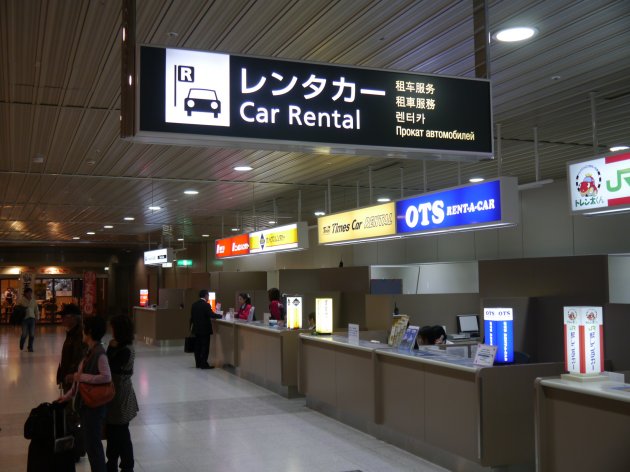
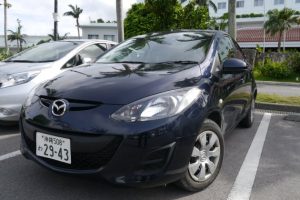
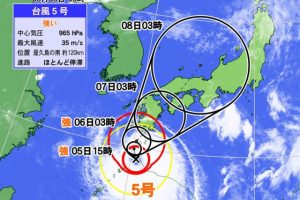

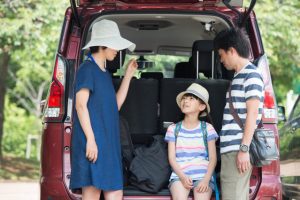
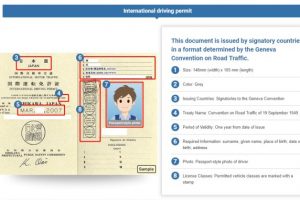
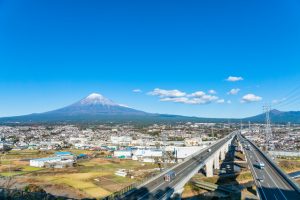






![[Tabirai Car Rental]How can I rent a car equipped with studless snow tires in Japan?](http://www.japan-rentacar.org/wp-content/uploads/wordpress-popular-posts/122-featured-100x60.jpg)


![[Must-see] Notes on using the car rental comparing and booking website "Tabirai Car Rental"](http://www.japan-rentacar.org/wp-content/uploads/wordpress-popular-posts/84-featured-100x60.jpg)




![[Japan Self Drive]Useful and easy-to-understand information. It's a must see for those who rent a car for first time!!](http://www.japan-rentacar.org/wp-content/uploads/wordpress-popular-posts/48-featured-100x60.jpg)

